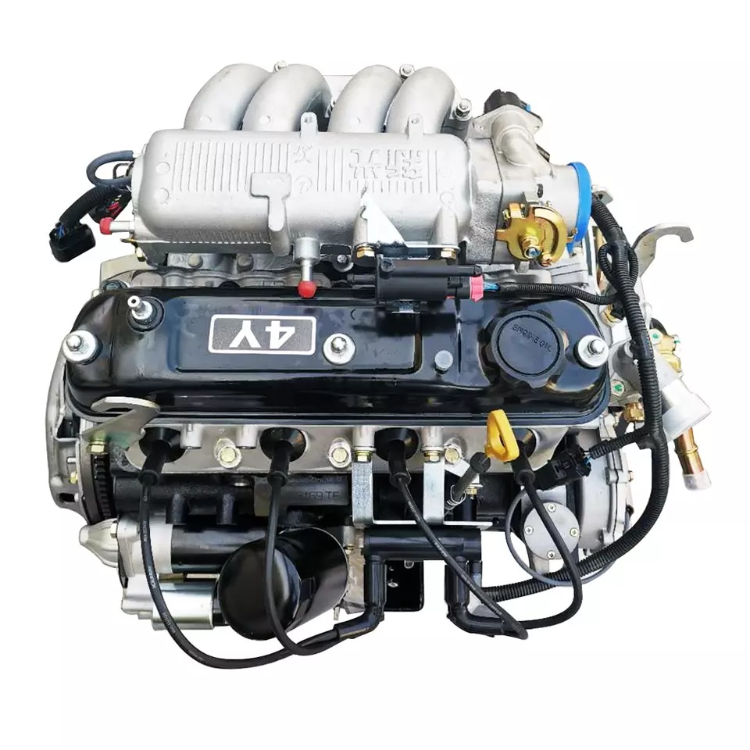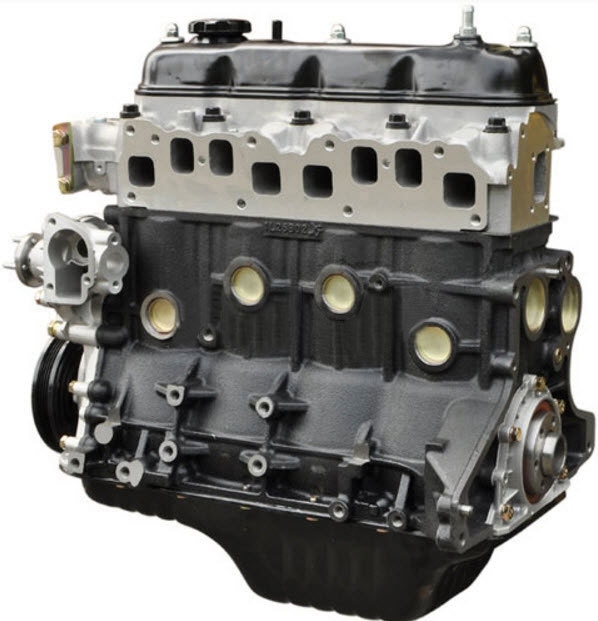How to Maximize Fuel Economy with Your 4Y Engine
How to Maximize Fuel Economy with Your 4Y Engine
Blog Article
Exploring the Different Sorts Of Engine: Which One Fits Your Demands?
Interior combustion engines proceed to dominate due to their reliability, while electrical engines are obtaining grip for their sustainability. Hybrid engines supply a flexible compromise, and diesel engines stand out for their power in requiring applications.

Interior Combustion Engines
Interior combustion engines (ICEs) are the foundation of contemporary transportation, powering a substantial variety of vehicles from cars to planes. These engines operate the concept of converting gas into power through a collection of controlled explosions within a combustion chamber. One of the most common kinds of ICEs include gas engines, diesel engines, and rotary engines, each designed to fulfill particular efficiency and efficiency requirements.
Gasoline engines typically use spark ignition, while diesel engines count on compression ignition, resulting in unique distinctions in fuel performance and power output (4y engine). Rotating engines, or Wankel engines, offer a small layout and smooth operation, but are less typically made use of in mainstream applications
ICEs have undergone significant improvements in innovation, including the introduction of turbocharging and fuel injection systems, which boost total effectiveness and efficiency. In spite of their efficiency improvements, ICEs face increasing analysis due to their environmental impact, especially relating to greenhouse gas exhausts.
Electric Engines
As issues about ecological sustainability and nonrenewable fuel source dependence grow, electric engines have actually become a compelling alternative to interior combustion engines. These engines utilize electrical motors powered by batteries or fuel cells, offering a cleaner and more reliable motive powers.
Among the key advantages of electric engines is their lowered discharges. Unlike traditional engines that melt nonrenewable fuel sources, electric engines create zero tailpipe exhausts, dramatically reducing air pollution and adding to enhanced public health. In addition, the effectiveness of electric motors usually exceeds that of inner combustion engines, transforming a better percentage of energy from the source of power right into useful power for motion.
Electric engines are also remarkable for their quiet operation, making them optimal for urban atmospheres. 4y engine. The simplicity of their style causes fewer relocating parts, which can lead to minimized upkeep costs and boosted reliability gradually
However, obstacles stay, consisting of battery production effects, billing infrastructure, and variety constraints. In spite of these difficulties, the expanding investment in electric lorry technology and sustainable power resources points toward an appealing future for electrical engines, placed to play an important role in the change towards lasting transportation.
Hybrid Engines
Blending the benefits of both electrical and conventional inner combustion engines, hybrid engines represent a versatile option in the pursuit for efficient and sustainable transportation. These engines integrate a gas or diesel motor with an electrical motor, enabling for boosted fuel effectiveness and minimized exhausts contrasted to standard lorries.
Hybrid engines run in numerous settings, using the electrical motor for low-speed driving and the interior combustion engine for higher rates or when even more power is required. This vibrant operation not only enhances fuel economic climate yet additionally adds to a smoother driving experience. Regenerative stopping is one more vital function, catching energy typically shed during stopping and rerouting it to recharge the battery.

As customers progressively prioritize eco-friendliness, crossbreed engines stick out as a functional choice, supplying an efficient balance of performance, performance, and environmental duty. This versatility makes them ideal for metropolitan travelling and long-distance travel alike.
Diesel Engines
Efficiency and power are trademarks of diesel engines, which have actually long been preferred for their toughness and gas economic climate. These engines operate the principle of compression ignition, where air is pressed to a high temperature before gas is injected, sparking it without the demand for ignition system. This procedure enables diesel engines to attain higher thermal effectiveness contrasted to gas engines, equating into much better gas mileage and lower co2 exhausts.
Diesel you can find out more motor are especially appropriate for durable applications such as vehicles, buses, and commercial equipment, where torque and resilience are vital. Their design normally consists of more powerful components to withstand the higher pressures generated during procedure, causing longer life span and reduced maintenance costs.

Different Gas Engines
While diesel engines have long controlled the landscape of durable power sources, have a peek at this website different gas engines are getting grip as practical options for an extra sustainable future. These engines utilize a selection of fuels, such as pressed gas (CNG), ethanol, gas, and hydrogen, aiming to lower greenhouse gas discharges and reliance on fossil gas.
One substantial advantage here of different fuel engines is their possible to lower carbon impacts. CNG engines send out fewer toxins compared to standard diesel engines, making them suitable for metropolitan transportation systems and fleets seeking to improve air quality. Ethanol, stemmed from biomass, not only reduces discharges but likewise sustains farming economic climates.
Hydrogen fuel cells represent a sophisticated advancement in this world, using zero-emission power via a chain reaction between hydrogen and oxygen. Nonetheless, difficulties such as framework development and production costs continue to be obstacles to extensive fostering - 4y engine.
Conclusion
Finally, choosing the appropriate engine type necessitates careful consideration of certain requirements and choices. Inner burning engines use integrity, while electrical engines focus on sustainability and lowered upkeep. Crossbreed engines incorporate the benefits of both, boosting effectiveness, whereas diesel motor give superior power and torque for heavy-duty applications. Alternative gas engines existing environmentally friendly options, albeit with potential infrastructure difficulties. Inevitably, a comprehensive assessment of driving routines and environmental worths will assist in a notified decision concerning engine choice.
Crossbreed engines provide a versatile concession, and diesel engines stand out for their power in demanding applications. The most common kinds of ICEs include gasoline engines, diesel engines, and rotary engines, each made to satisfy particular efficiency and effectiveness needs.
Unlike typical engines that shed fossil fuels, electric engines produce absolutely no tailpipe discharges, significantly decreasing air pollution and adding to enhanced public health.Crossbreed engines run in several settings, utilizing the electrical motor for low-speed driving and the internal burning engine for higher rates or when more power is required. Hybrid engines incorporate the advantages of both, boosting efficiency, whereas diesel engines give exceptional power and torque for sturdy applications.
Report this page